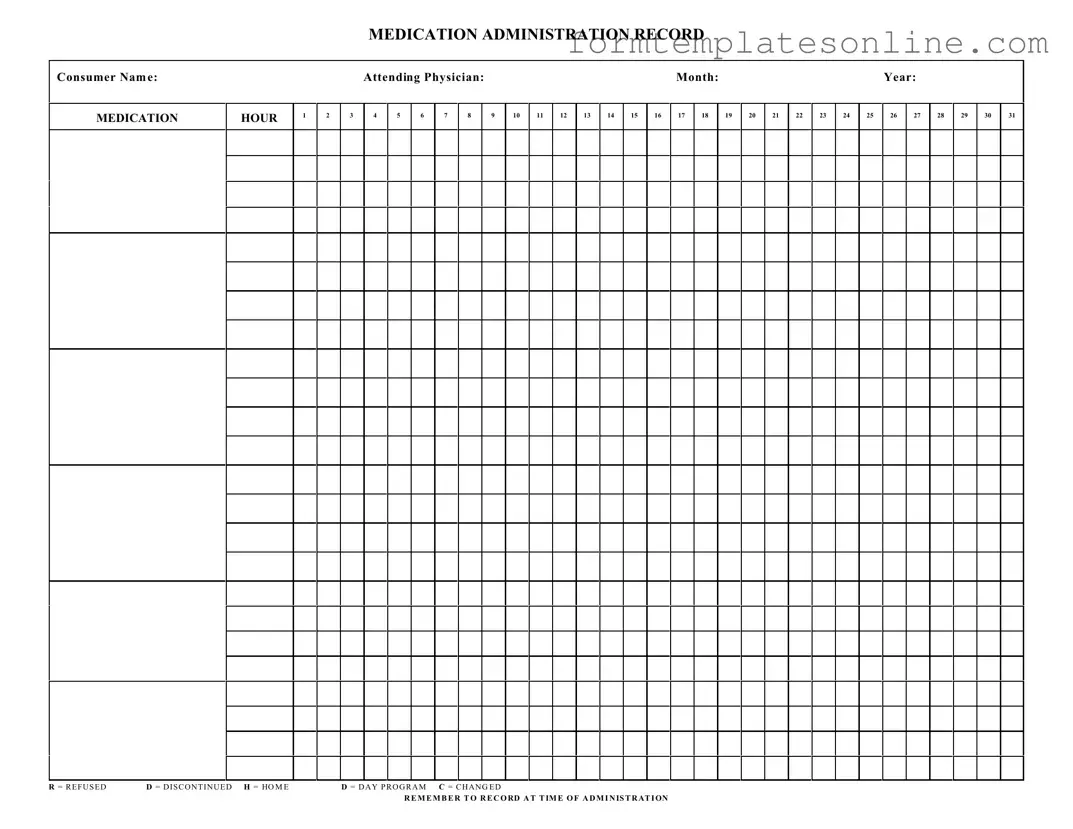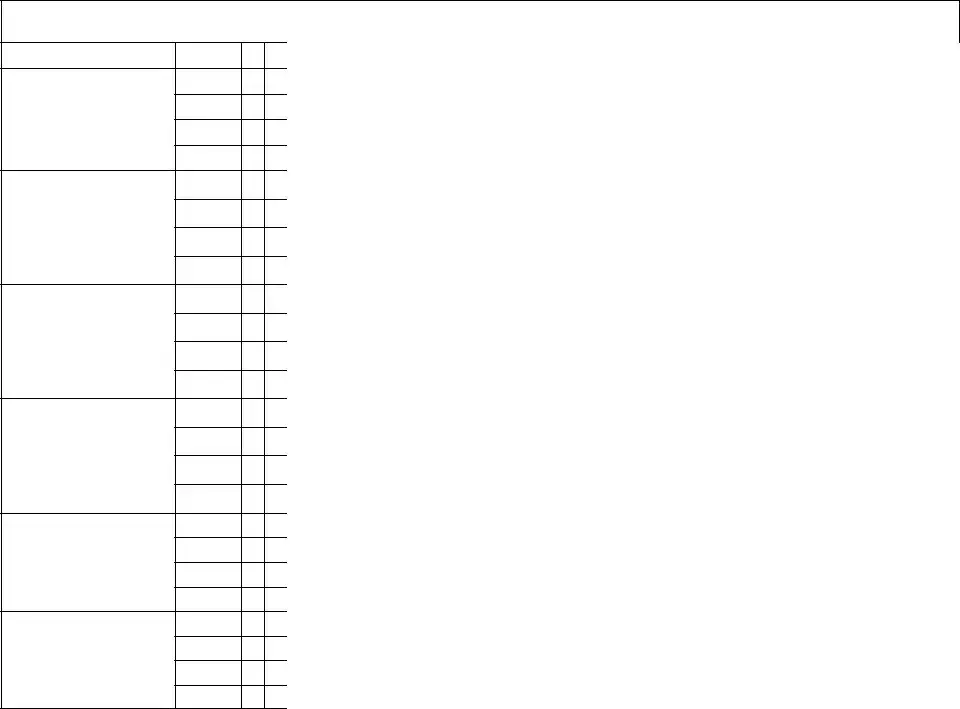What is a Medication Administration Record Sheet?
The Medication Administration Record Sheet is a document used to track the administration of medications to consumers. It ensures that all doses are recorded accurately, helping to maintain a clear history of medication use for each individual. This sheet is essential for healthcare providers to monitor patient compliance and medication effectiveness.
How do I fill out the Medication Administration Record Sheet?
To fill out the sheet, begin by entering the consumer's name, the attending physician's name, and the date (month and year). Then, for each medication administered, mark the appropriate hour and date. Use the designated codes to indicate if a dose was refused (R), discontinued (D), or if there was a change (C). Always record the information at the time of administration to ensure accuracy.
What do the codes on the form mean?
The codes are shorthand notations used to indicate specific actions regarding medication administration. 'R' stands for Refused, meaning the consumer did not take the medication. 'D' indicates Discontinued, which means the medication is no longer being administered. 'H' refers to Home, while 'D' can also denote Day Program. 'C' indicates that there has been a Change in the medication. These codes help maintain clarity and consistency in record-keeping.
Why is it important to record medication administration at the time it occurs?
Recording medication administration at the time it occurs is crucial for maintaining accurate medical records. This practice helps prevent errors, such as double dosing or missing doses, and provides a reliable account of the consumer's medication history. Timely documentation also aids healthcare providers in making informed decisions regarding ongoing treatment.
Who is responsible for filling out the Medication Administration Record Sheet?
The responsibility for filling out the Medication Administration Record Sheet typically falls on healthcare providers, such as nurses or caregivers, who administer the medications. It is important that those responsible for documentation are trained in proper record-keeping practices to ensure accuracy and compliance with regulations.
What should I do if a medication is refused?
If a consumer refuses a medication, you should mark the appropriate hour and date with an 'R' on the Medication Administration Record Sheet. Additionally, it is important to document the reason for refusal, if known, and notify the attending physician. This information can help in adjusting the treatment plan if necessary.
Can changes to medication be noted on this form?
Yes, changes to medication can be noted on the Medication Administration Record Sheet. When a medication is changed, you should mark the hour and date with a 'C' to indicate that a change has occurred. It is also advisable to document the details of the change in the consumer's medical record to provide comprehensive information for future reference.
How long should the Medication Administration Record Sheet be kept?
The Medication Administration Record Sheet should be kept for a minimum period as specified by state regulations or organizational policies. Generally, it is advisable to retain these records for several years to ensure compliance with legal and medical standards. Always check with your organization’s guidelines for specific retention policies.
What should I do if I make an error on the Medication Administration Record Sheet?
If an error is made on the Medication Administration Record Sheet, it is important to correct it properly. Cross out the incorrect entry with a single line, and write the correct information next to it. Initial the correction and date it to maintain a clear record of changes. Avoid using correction fluid or erasers, as this can obscure the original entry.

